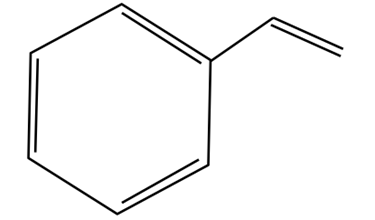This set of Corrosion Engineering Multiple Choice Questions & Answers (MCQs) focuses on “Materials – Thermoplastics”.
1. Which of the following is/are the classification of plastics based on the thermal behavior?
a) Thermoplastics
b) Thermosetting
c) Neither thermoplastics nor thermosetting
d) Thermoplastics and thermosetting
View Answer
Explanation: Plastics can be categorized based on various parameters such as monomer units, temperature behavior, and structure. Thermoplastics and Thermosetters are the two types of plastics based on thermal behavior.
2. What is meant by thermoplastic?
a) It softens on heating and returns to original hardness on cooling
b) It hardens on heating and returns to original hardness on cooling
c) It hardens on heating and retains hardness on cooling
d) It softens on heating and retains hardness on cooling
View Answer
Explanation: Thermoplastics is one of the type of plastics which softens on heating and returns to original hardness on cooling. Fluorocarbons, polyether, and nickel are examples of thermoplastics.
3. Which of the following thermoplastic is corrosion-resistant to all environments up to 550°F?
a) Polyvinyl chloride
b) Polystyrene
c) Teflon
d) Polyethylene
View Answer
Explanation: Teflon is one of the fluorocarbons which is regarded as noble metals of plastics. It is corrosion-resistant to practically all environments up to 550°F. The monomer of Teflon is denoted as CF2=CF2.
4. Which of the following is the chemical name of nylon (6, 6)?
a) Polyethylene terephthalate
b) Hexamethylene adipamide
c) Polytetrafluoroethylene
d) Polyvinyl fluoride
View Answer
Explanation: The chemical name of nylon (6.6) is hexamethylene adipamide. It is derived from the monomers of nylon that are hexamethylenediamine and adipic acid.
5. Which of the following thermoplastics is used for making eye lenses?
a) Polytetrafluoroethylene
b) Polyethylene terephthalate
c) Polymethyl methacrylate
d) Polyvinyl chloride
View Answer
Explanation: Polymethyl methacrylate is the polymer of many methyl methacrylate monomeric units. It is used for making eye lenses as it is transparent to light. It is usually denoted as PMMA.
6. Which of the following is/are the monomers of nylon (6,6)?
a) Hexamethylenediamine
b) Adipic acid
c) Both Hexamethylenediamine and adipic acid
d) Neither Hexamethylenediamine nor adipic acid
View Answer
Explanation: Hexamethylenediamine and adipic acid are the two monomers of nylon (6,6). The chemical formula of hexamethylenediamine and adipic acid is NH2-CH2-CH2-CH2-CH2-CH2-CH2-NH2 and HOOC-CH2-CH2-CH2-COOH respectively.
7. Which of the following is/are the examples of thermoplastics?
a) Polypropylene
b) Polystyrene
c) Polyvinyl chloride
d) Polypropylene, polystyrene and polyvinyl chloride
View Answer
Explanation: Thermoplastics are the type of plastics that soften on heating and return to their original hardness when cooled. Polypropylene, polystyrene, polyethylene, fluorocarbons, and polyvinyl chloride are examples of thermoplastics.
8. Which of the following thermoplastic monomer is depicted in the given figure?

a) Polystyrene
b) Teflon
c) Polyvinyl chloride
d) Polyurethane
View Answer
Explanation: Styrene is depicted in the given figure and it is the monomer of polystyrene. It is an amorphous, colorless, rigid, and hard plastics. The monomer of polyvinyl chloride and Teflon is CH2=CH-Cl and CF2=CF2 respectively.
9. Which of the following is the monomer of Polyvinyl chloride (PVC)?
a) CF2=CF2
b) CH2=CH-Cl
c) COOH-CH2-CH2-CH2–CH2COOH
d) C6H5-CH=CH2
View Answer
Explanation: Vinyl chloride (CH2=CH-Cl) is the monomeric unit of polyvinyl chloride. It is used for piping and cable insulation extensively. CF2=CF2, COOH-CH2-CH2-CH2–CH2COOH and C6H5-CH=CH2 are the monomers of Teflon, nylon, and polystyrene respectively.
10. Degradation of plastics is due to swelling, loss of mechanical properties, softening, hardening, and spalling.
a) True
b) False
View Answer
Explanation: Corrosion of plastics is not the same as that of metals. Corrosion of metals results in the dissolution of metal ions whereas corrosion or degradation of plastics is due to swelling, loss of mechanical properties, softening, hardening, and spalling.
Sanfoundry Global Education & Learning Series – Corrosion Engineering.
To practice all areas of Corrosion Engineering, here is complete set of 1000+ Multiple Choice Questions and Answers.
If you find a mistake in question / option / answer, kindly take a screenshot and email to [email protected]
- Apply for Metallurgical Engineering Internship
- Practice Metallurgical Engineering MCQs
- Check Corrosion Engineering Books
- Check Mechanical Engineering Books
- Apply for Mechanical Engineering Internship
